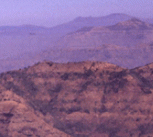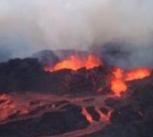Lava from 2021 Icelandic eruption gives rare view of deep churnings beneath volcano
16 September 2022After centuries without volcanic activity, Iceland’s Reykjanes peninsula sprang to life in 2021 when lava erupted from the Fagradalsfjall volcano. New research involving the University of Cambridge helps us see what is going on deep beneath the volcano by reading the chemistry of lavas and volcanic gases almost as they were erupted.





